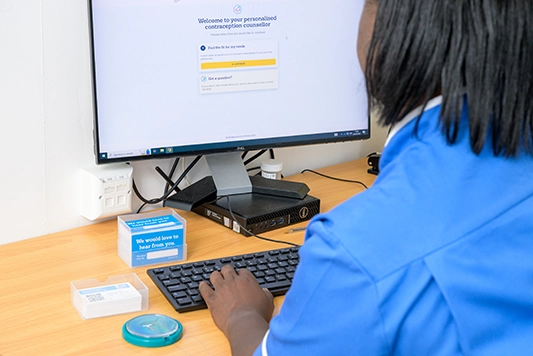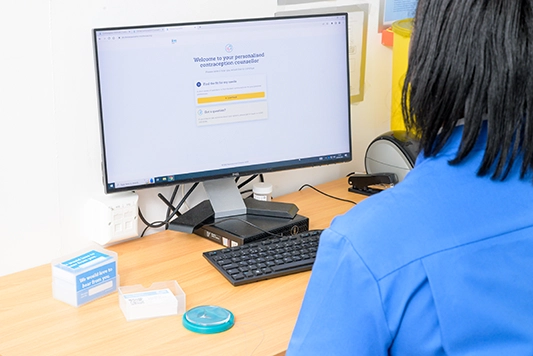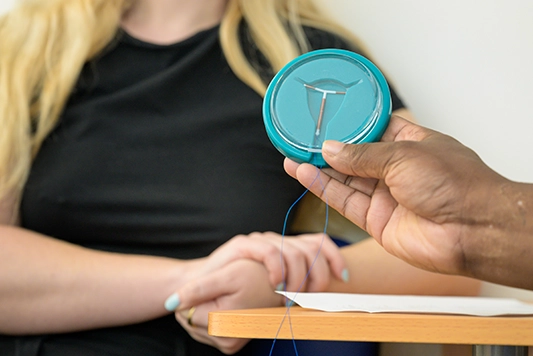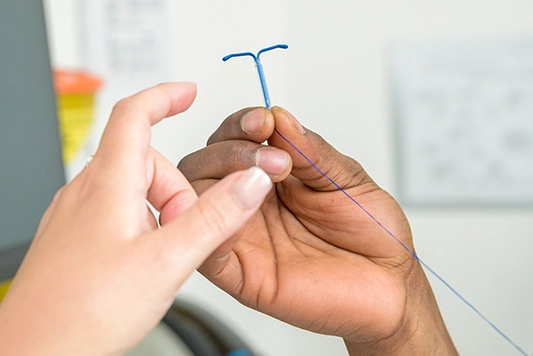The contraceptive patch

The contraceptive patch
The combined contraceptive patch is a small soft plaster patch that you stick on your skin. It contains two hormones, progestogen and oestrogen, similar to the hormones in your body.
The two hormones primarily prevent an egg from being released each month. They also make it difficult for sperm to get to an egg and thin the uterus (womb) lining which makes it difficult for a fertilised egg to implant there. The patch is left on the skin continuously night and day for one week and then a new patch is applied to a different area.
Video – The contraceptive patch
Would you like to find out everything you need to know about the combined contraceptive patch? We’ve created this short explainer video, filled with information about the patch including:
– What it is
– How effective it is in protecting against pregnancy
– Advantages
– Disadvantages
– Risks
You can use the patch on most areas of your body as long as your skin is clean, dry and not very hairy.
The patch needs to be replaced with a new one every week.
Users of the patch have the option to have a period or to skip or shorten their period. It is not dangerous to take combined methods of contraception like the patch continuously, without taking a break. If you would prefer not to have a break at all, you can immediately replace your patch. Taking the patch in this way can also help if you usually experience unpleasant side effects during your break.
Whilst it isn’t medically necessary to have a break, taking this method continuously does mean that you have less control over when you have a bleed (you may occasionally still have a bleed, but won’t necessarily know when to expect this).
If you’d prefer to have more control over when you have a bleed, there are other ways of taking the patch available – for example, you could use the ring continuously for 9 weeks (using 9 patches) and then have a break for 4 or 7 days (this is called tricycling).
If you do not have a routine and think you may forget to replace the patch every week, you may wish to consider a LARC (Long-Acting Reversible Contraception) method.
Effectiveness of the contraceptive patch
The patch works well at preventing pregnancy. However, its ability to stop a pregnancy largely depends on a person using it properly.
Perfect use: more than 99% effective. Fewer than 1 in 100 people will get pregnant in a year when using the contraceptive patch correctly.
Typical use: around 91% effective. Around 9 in 100 people who use the patch will get pregnant in a year.
If you think you will not be able to remember to replace the patch once a week, it may not be the right method for you.

Advantages, disadvantages and risks associated with the contraceptive patch
Where can I get the combined contraceptive patch?
In the UK, you can get the combined contraceptive patch for free from sexual health clinics, some GP surgeries and some young people’s services.
At MSI UK, we primarily offer contraception services as part of your abortion care. We also offer contraception services in some parts of England for people who have not accessed our abortion services. From these clinics, people can access LARC (Long-Acting Reversible Contraception, such as the coils, the implant and the injection) with us without having had an abortion.
Follow the link to find out more: MSI UK Contraception Clinics
The contraceptive patch and your period
One advantage of using the combined contraceptive patch is that it can make your periods regular, lighter and less painful.
The combined contraceptive patch also gives you more control over your periods: you can choose not to have a period, or to delay your period.
Learn more about contraception
Visit the pages below to find a comparison tool to help you find the right method for you, and to learn more about short-acting and long-acting reversible contraception.

Which method is right for me?
Find a contraception comparison tool that can help you find the right method for you.

Short-acting contraception
Short-acting methods include the contraceptive pill, patch and ring.

Long-acting contraception
Long-acting contraceptive methods include the coils, the injection and the implant.








































